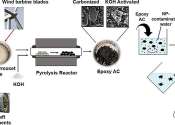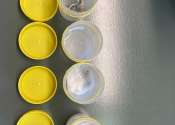Scientists can now remove nanoplastics from our water with 94% efficiency
University of Waterloo researchers have created a new technology that can remove harmful nanoplastics from contaminated water with 94% efficiency. The study, "Utilization of epoxy thermoset waste to produce activated carbon ...
Mar 14, 2024
0
526









